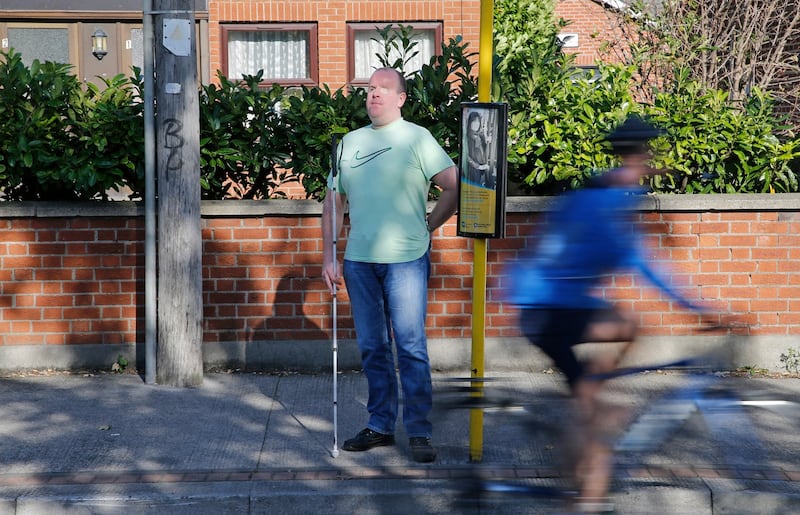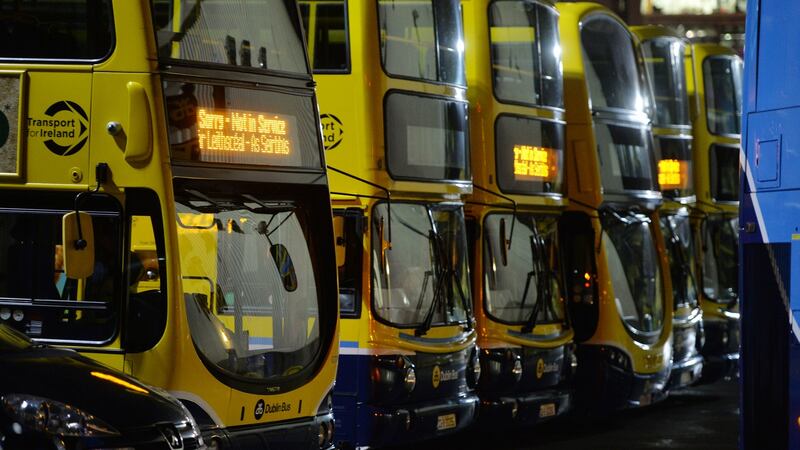Tony Murray is blind. The 38-year-old leaves his home in Beaumont, north Dublin, every weekday morning at 7am, carrying his white stick. It takes him three minutes to walk to Collins Avenue where he gets on the 14 bus to Connolly Station.
Here, he daily endures some of his most anxiety-inducing moments.
"I can't see a thing. I get off the bus, the whole area is crowded, and I walk through the crowds, cross over Amiens Street, a very busy junction, to the Luas stop, which is often quite crowded," he says.
“There are lots of variables: traffic, cyclists, people, everyone rushing around. Variables I have no control over. It is very stressful.”
Then he pushes himself on to a packed Luas to get to his office at Spencer Dock, where he works as a senior IT solutions architect for the Central Bank.
It is already a lot to put up with, but he “loves being part of this commuting society every morning, because I am proud of what I do.”
Under the BusConnects plan, Mr Murray will have to walk farther from home to a different bus stop. Then he will travel away from the city centre towards Artane. There he will get another bus into the city. Then he have to change again.
Risks
For a distance of 5km, as the crow flies, his twice-daily changeover will become a six-stage ordeal.
“That multiplies the crossings of busy roads, multiplies the encounters with crowds, multiplies the chances of something going wrong – the risks and threats – and multiplies the stress,” he says.

That is before one adds in other unknowns like bad weather. It is already making him anxious.
He stresses again and again that he accepts the city's public transport network needs an overhaul. But, he believes, the National Transport Authority (NTA) has forgotten about the users.
“In particular, users with disabilities or elderly users,” he says. “It is not just about getting bus A from point one to point two, then pick up bus B from point three to point four.

“Any significant design project, whether it’s technology or transport, the user has to be at the centre of it. And in terms of inclusivity, that should be users of all abilities. I think that is a failing on the part of the NTA, for not considering users of all needs and disabilities.”
Worried
It is not just himself he is worried about. Murray fears others with disabilities will be dissuaded from taking up opportunities, like jobs or education, if their commute is too stressful.
“If you weren’t from Dublin and coming to the city for the first time, it would be very, very daunting to be told you have a three-stage journey to the city centre as a blind person,” he says.
“I’m not saying that would be insurmountable, but it would be a contributing factor in whether someone felt they were able for it. This is just another barrier thrown up.
“BusConnects fails me. But I don’t think the plan should change to facilitate just me. The plan should be all-inclusive.”









